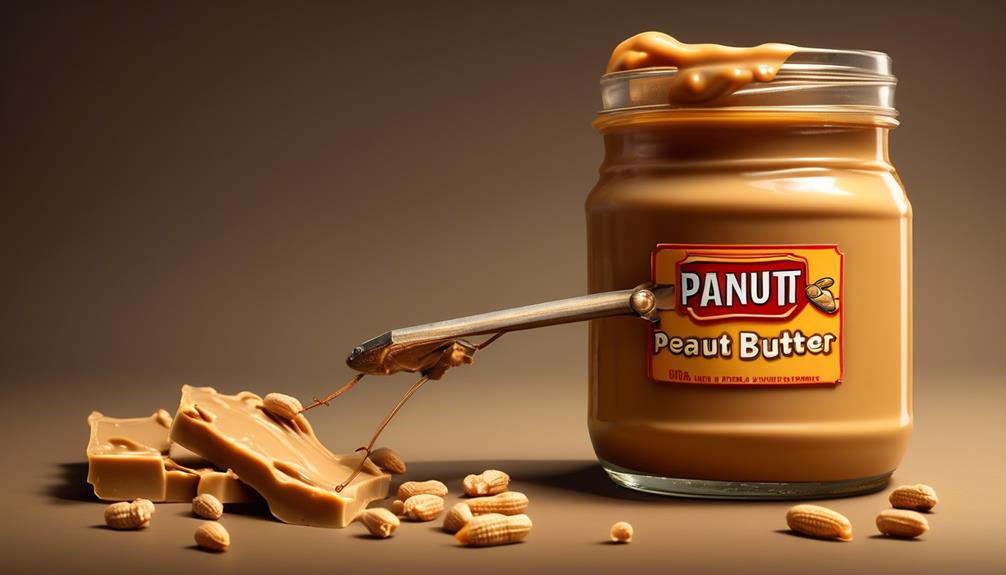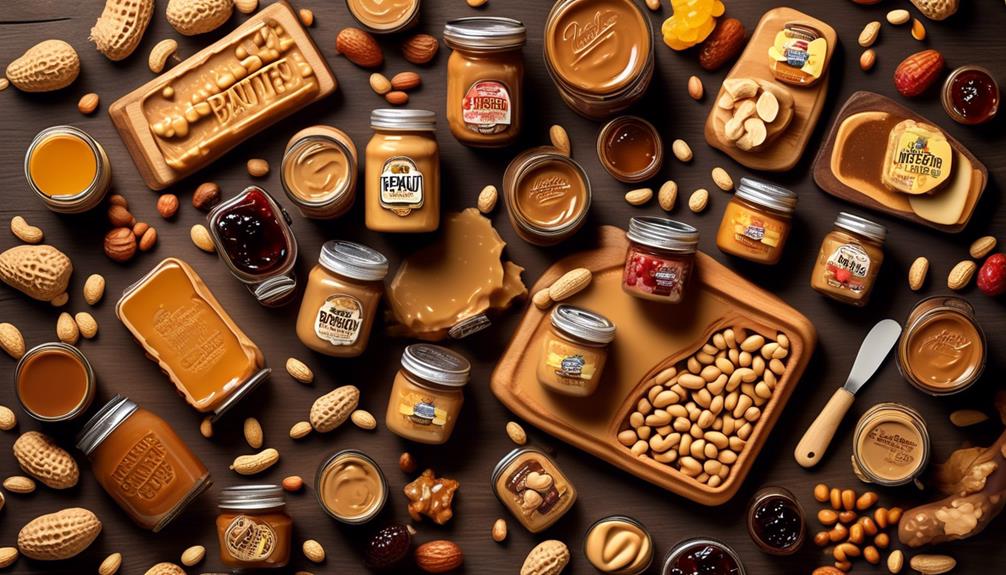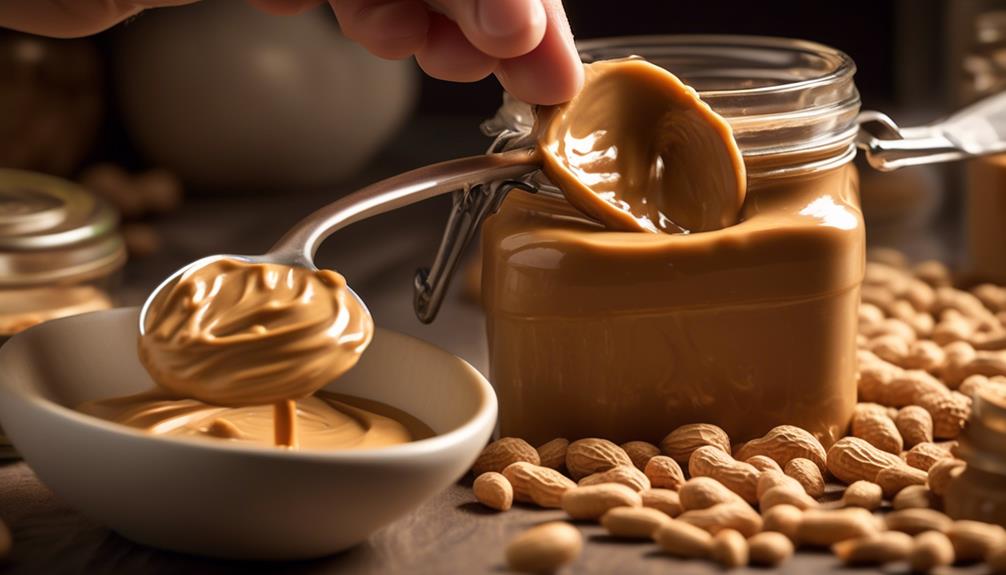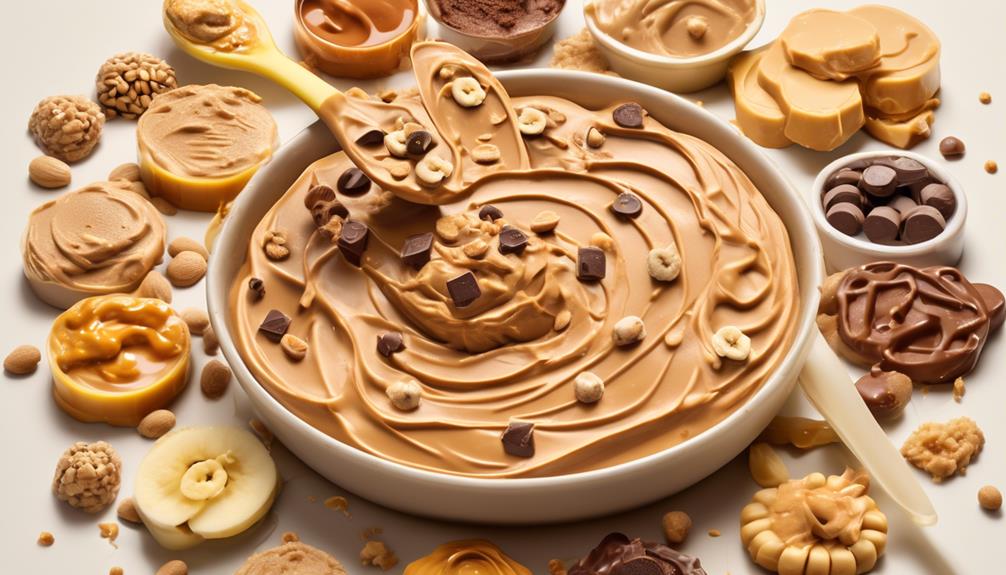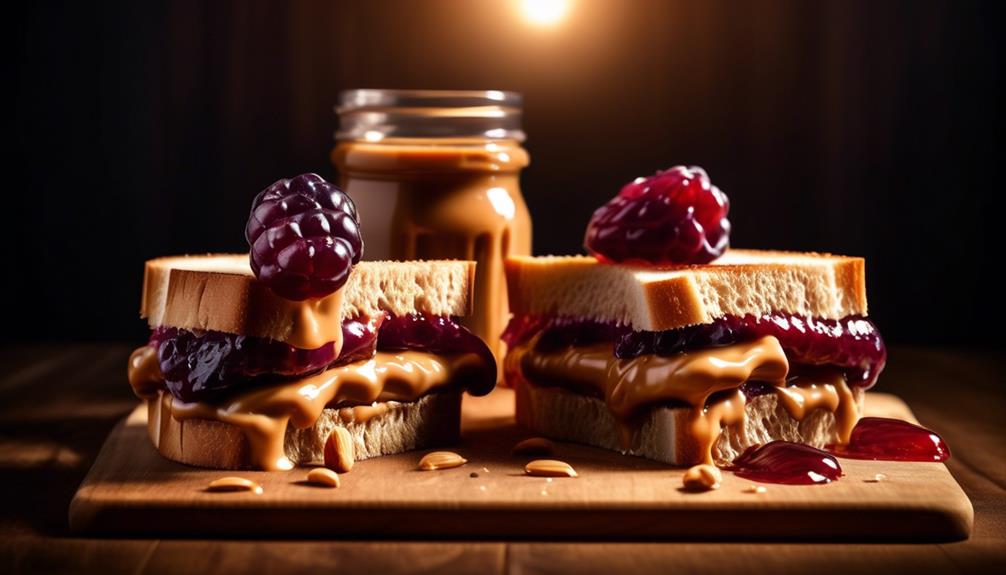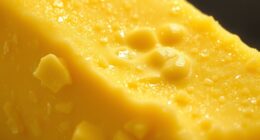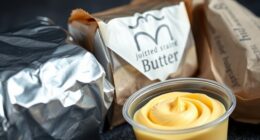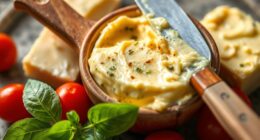Here we are, considering how long peanut butter can be used as mouse bait. We’ve all heard the traditional belief that peanut butter is the best choice for attracting those annoying critters, but how long does it actually stay effective?
Well, let's just say the answer might surprise you. There are a few key factors to consider when it comes to the effectiveness and durability of peanut butter as mouse bait, and we're about to uncover them all.
Stick around to find out how to make the most of this classic bait and whether it might be time to consider some alternative options.
Key Takeaways
- Proper storage conditions are crucial for maintaining the longevity and effectiveness of peanut butter bait.
- Freshening old bait with small additions like fresh peanut butter or vanilla extract can enhance its appeal to mice.
- Regularly testing the freshness and aroma of the bait and swapping out old bait for fresh servings can improve trap effectiveness.
- Considering alternative bait options such as hazelnut spread, chocolate, or dog and cat food can increase the chances of successfully trapping mice while managing expenses effectively.
Shelf Life of Peanut Butter as Bait
The shelf life of peanut butter as mouse bait typically lasts for several weeks if stored properly. When using peanut butter as bait, it's crucial to ensure that it's fresh and aromatic to appeal to mice. Check for signs of spoilage such as mold, off odors, or changes in texture before using peanut butter as bait.
To prevent mice from easily snatching the bait without triggering the trap, consider using a small amount of fresh peanut butter. It's essential to experiment with different bait options if peanut butter isn't effectively attracting mice to the traps. This ensures that you're using the most appealing bait for the specific mice in your area.
Factors Affecting Bait Longevity

When it comes to the longevity of bait, several factors come into play.
Our discussion will focus on how storage conditions impact bait effectiveness, the level of rodent activity influencing bait longevity, and how weather conditions can affect the shelf life of bait.
These factors play a crucial role in determining how long bait, such as peanut butter, remains an effective lure for mice.
Storage Conditions Impact
Maintaining proper storage conditions for mouse bait is crucial to ensure its longevity and effectiveness in attracting and eliminating mice.
When it comes to using peanut butter as bait for your mouse problem, storing it properly is essential. We recommend storing the peanut butter bait in a cool, dry place to prevent spoilage and maintain its attractiveness to mice. It's also important to keep the bait in airtight containers to preserve its freshness and scent, ensuring its effectiveness in addressing your mouse problem.
Furthermore, protecting the bait from moisture will prevent mold growth and maintain its appeal to mice. To maintain the bait's scent and texture, store it away from direct sunlight.
Regular inspections are also necessary to check for signs of spoilage or decreased effectiveness and replace the bait as needed.
Rodent Activity Level
Understanding the factors that affect bait longevity is essential for effectively managing rodent activity and ensuring successful pest control measures. When it comes to rodent activity level, the size and activity of the pest population play a crucial role in determining how quickly bait is consumed. Additionally, trap placement in high-traffic areas can significantly impact bait consumption rates. To illustrate the impact of rodent activity level on bait longevity, consider the following factors:
| Factor | Impact on Bait Longevity |
|---|---|
| Environmental Factors | Humidity and temperature can affect bait longevity. Exposure to sunlight can also impact bait effectiveness. |
| Pest Population | The size and activity level of the rodent population can impact how quickly bait is consumed. |
| Bait Type | Certain baits, such as peanut butter, may dry out or lose appeal to rodents over time. |
| Trap Placement | Bait placed in high-traffic areas may be consumed more quickly than bait in less frequented locations. |
| Bait Quantity | Using too much bait can result in rodents stealing it without triggering the trap, affecting bait longevity. |
Considering these factors is crucial when using peanut butter as bait in mouse traps, as it helps in determining the effectiveness and longevity of the bait.
Weather Conditions Affect
Monitoring weather conditions is essential for understanding how they affect bait longevity and effectiveness in pest control measures. When it comes to using peanut butter as bait in mouse traps, weather conditions play a crucial role.
Extreme temperatures can alter the consistency and scent of the peanut butter, impacting its appeal to mice. High humidity may cause the bait to become soggy or moldy, while low humidity can dry it out, making it less attractive to rodents. Exposure to elements such as rain, snow, or direct sunlight can degrade the bait, reducing its effectiveness over time.
To mitigate these effects, placing traps in sheltered locations can help protect the bait from adverse weather conditions. Regular monitoring and replacement of bait as needed will ensure its freshness and appeal to mice remains optimal despite changing weather conditions.
Maximizing Peanut Butter's Effectiveness

Let's talk about how to maximize the effectiveness of peanut butter as mouse bait.
Choosing the right bait, like a small amount of fresh peanut butter, can help attract mice without letting them steal the bait.
Placing the bait strategically and replenishing it when necessary are also key factors in catching mice successfully.
Choosing the Right Bait
To maximize the effectiveness of peanut butter as mouse bait, experimenting with different bait options can help keep mice guessing and increase trap effectiveness. Peanut butter and hazelnut spread are popular choices due to mice's preference for nuts and seeds.
Chocolate can also work well, but avoid soft varieties that can be easily licked off. Using a small amount of bait, like a pea-size, can attract mice without allowing them to steal it without getting caught.
It's also worth considering alternative options such as dog food, cat food, breakfast cereal, or even chicken wing tips for mouse and rat traps.
Placement for Best Results
We position traps along walls and in high-traffic areas where mice frequently travel, facing the wall to encourage mice to approach the bait. Placing mouse traps strategically is crucial for maximizing the effectiveness of peanut butter as bait.
We hide traps in dark recesses or behind appliances and cabinets where mice are likely to hide and scurry. Additionally, setting traps in pairs, an inch apart, in areas with the highest mouse activity increases the chances of catching multiple mice.
Acclimating mice to traps by initially placing baited but unset traps for a few days encourages them to trust the setup before setting the traps. By avoiding setting traps in wrong places and focusing on strategic positioning to block potential escape routes, we increase the likelihood of successful catches.
This thoughtful placement ensures that the enticing aroma of peanut butter lures the mice into the traps, delivering the desired results.
Replenishing the Bait
Maximizing the effectiveness of peanut butter as mouse bait involves regularly replenishing the bait to ensure its freshness and appeal to the mice. Mice are more attracted to fresh dollops of peanut butter, so be sure to replace it if it dries out or loses its aroma.
Experimenting with different bait options, such as hazelnut spread or chocolate, can also help maintain the bait's appeal. To prevent mice from easily licking off the bait, consider securing it on the trap using a hot glue gun.
Checking Peanut Butter Bait Freshness

Regularly swap out old peanut butter for fresh servings to maintain its effectiveness as mouse bait. The peanut butter can dry out over time, losing its scent and appeal to mice. To ensure the bait remains enticing, it's crucial to check its freshness regularly.
The stickiness of the peanut butter can also enable mice to snatch it without triggering the trap. Therefore, using a small amount is essential for trapping success. If the peanut butter has become dry and less aromatic, consider replacing it with fresh and aromatic dollops to effectively attract mice.
It's also important to monitor the mice's response to the bait. If they become cautious after a negative encounter with a peanut butter trap, they may start to avoid it. This indicates the need to change the bait.
Storing Peanut Butter for Bait

After ensuring the peanut butter bait's freshness and appeal to mice, the next crucial step is to address the proper storage of the bait to maintain its effectiveness.
When storing peanut butter for bait, it's essential to keep it in a cool, dry place to prevent spoilage and to avoid attracting unwanted pests.
Checking the expiration date on the peanut butter is crucial to ensure it's still fresh and appealing to mice.
Keeping the peanut butter tightly sealed is important to maintain its aroma and effectiveness as bait.
Consider using small, single-serve packets of peanut butter for convenience and to prevent waste. This also allows for easy replacement of the bait, ensuring its freshness and appeal to mice.
Reviving Old Peanut Butter Bait

We've learned that freshening old bait, testing its effectiveness, and storing it properly are crucial for successful mouse trapping.
First, we'll discuss ways to revive old peanut butter bait to ensure it remains appealing to mice.
Then, we'll explore methods to test the bait's effectiveness and know when it's time to replace it.
Lastly, we'll provide some tips for storing bait to maintain its freshness and allure to rodents.
Freshening Old Bait
To revitalize old peanut butter bait, consider following these steps:
- Check for mold or spoilage before using the old bait. If it is not spoiled, proceed to the next step.
- Add a small amount of fresh peanut butter to enhance the appeal of the old bait.
- Mix in a drop of vanilla extract to revitalize the scent of the bait.
- Warm the old peanut butter slightly to enhance its aroma and attractiveness to mice.
- However, if the old peanut butter has lost its scent and stickiness, it may be time to consider using alternative bait for the mouse traps.
- By taking these steps, you can ensure that the peanut butter bait remains effective in attracting mice to the traps.
Testing Bait Effectiveness
Reviving old peanut butter bait can be achieved by assessing its freshness and aroma, as these aspects significantly impact its effectiveness in attracting mice to the traps. To test bait effectiveness, consider the following factors:
| Peanut Butter Freshness | Quantity | Alternative Bait |
|---|---|---|
| Fresh, aromatic dollops are more appealing | Use a small amount, like a pea-size | Hazelnut spread, chocolate, cotton balls, dental floss, yarn, or twine |
Assessing the freshness and aroma of the peanut butter is crucial in ensuring its appeal to mice. Using a small amount of bait prevents mice from stealing it without getting caught. Additionally, considering alternative baits can help in attracting mice to the traps. By regularly swapping out old bait for fresh servings, the trap's effectiveness can be maintained. These simple steps can make a significant difference in catching mice effectively.
Storage Tips for Bait
Storing bait properly is crucial for maintaining its freshness and effectiveness in attracting mice to traps. When it comes to peanut butter, here are some storage tips to ensure it remains an enticing bait for mice:
- Check the expiration date of the peanut butter to ensure it's still fresh for baiting traps.
- Store the peanut butter in a cool, dry place to maintain its consistency and scent for effective trapping.
If the peanut butter has dried out, consider adding a small amount of vegetable oil to revive its stickiness.
- Avoid contamination by using a separate spoon or knife for bait application and keeping the jar tightly sealed when not in use.
Alternative Bait Options

Considering various factors such as effectiveness and cost, exploring alternative bait options can enhance the success of mouse traps. While peanut butter is a popular choice, other options can be just as enticing to mice. Here are some alternative bait options to consider:
| Bait Option | Effectiveness | Cost |
|---|---|---|
| Hazelnut spread | High | Moderate |
| Chocolate | Moderate | Moderate |
| Cotton balls | Low | Low |
| Dental floss | Low | Low |
| Yarn | Low | Low |
| Twine | Low | Low |
| Dog food | High | Low |
| Cat food | High | Moderate |
| Breakfast cereal | Moderate | Low |
| Chicken wing tips | High | Moderate |
These alternative baits provide a range of options based on effectiveness and cost. For instance, hazelnut spread and chocolate can be highly effective but may come with a moderate cost, while dog food and cat food are both high in effectiveness and low in cost. By considering these alternative bait options, you can increase the chances of successfully trapping mice while also managing your expenses effectively.
Monitoring Bait Attractiveness

Exploring the effectiveness of different bait options leads to the importance of monitoring bait attractiveness to ensure the success of mouse traps. When it comes to monitoring bait attractiveness, we've found that it's crucial to stay vigilant and adaptable.
Here are a few key ways we've learned to monitor bait attractiveness effectively:
- Regular Inspection: We make it a habit to check mouse traps frequently, ensuring that the bait hasn't dried out or become less appealing over time.
- Rotating Bait Options: By rotating between different bait types, such as peanut butter, cheese, or even small bits of chocolate, we can gauge which options are most attractive to the mice in our specific environment.
- Observing Trap Activity: Keeping an eye on trap activity helps us assess which baits are yielding the best results. This real-time feedback allows us to adjust our baiting strategy as needed.
- Maintaining Freshness: Replacing bait regularly helps maintain its freshness and appeal, increasing the likelihood of successful captures.
Adapting Bait Strategies Over Time

To enhance our trapping effectiveness, we continually adapt our bait strategies over time. We experiment with different bait options and adjust our approach based on the mice's preferences and behavior. We understand that mice can quickly become accustomed to certain bait types, leading to decreased trap success.
Therefore, we regularly rotate bait options, keeping the mice guessing and maintaining their interest. By changing bait types and quantities, we address the ineffectiveness of certain baits and improve our trap success rates.
Additionally, we strategically adjust trap settings, locations, and bait types over time to outsmart the mice and enhance our trapping effectiveness. We recognize the importance of regularly swapping out old bait for fresh servings to maximize trap success. This proactive approach ensures that the bait remains attractive to the mice.
Moreover, seeking expert advice for tailored solutions and effective pest control methods is crucial in addressing evolving bait strategies. By staying adaptable and open to change, we can effectively manage mouse infestations and maintain high trapping success rates using bait strategies such as peanut butter in our mouse traps.
Retiring Expired Bait

When peanut butter used as mouse bait has expired or dried out, it's essential to replace it with fresh and aromatic dollops to maintain its effectiveness. We want to ensure that our mouse traps are enticing and effective, so here are some tips for retiring expired bait:
- Swap out old bait regularly: Keep the peanut butter fresh and alluring to entice the mice into the traps.
- Consider changing the bait if mice become cautious: If the mice seem to be avoiding the peanut butter or are unresponsive to the traps, it may be time to try a different bait option.
- Experiment with alternative baits: Don't be afraid to try out different bait options to see what works best as an alternative to expired peanut butter.
- Avoid soft baits: Soft baits can be easily licked off by the mice, so opt for cost-effective and effective alternatives like dog food or cat food.
Frequently Asked Questions
Why Is Peanut Butter Not Working to Catch a Mouse?
Peanut butter doesn't always work to catch a mouse because its stickiness allows them to snatch it without triggering the trap. Using a small amount is crucial since a thick layer can let mice indulge without setting off the trap.
Dried-out peanut butter loses its scent, becoming less appealing. If other food sources are available, mice may choose an easier meal over the trap, suggesting the need for a change in bait.
Mice may also become cautious after a negative encounter with a peanut butter trap, prompting consideration for changing the bait.
How Far Away Can Mice Smell Peanut Butter?
We've found that mice can detect the scent of peanut butter from quite a distance, thanks to their keen sense of smell. It's incredible how they can pick up on it, isn't it?
Fresh, aromatic peanut butter can be especially effective. It's essential to use a small amount so the stickiness doesn't allow them to snatch it without triggering the trap.
This way, we can maximize the bait's effectiveness and catch those pesky critters.
Are Mice Attracted to Old Peanut Butter?
Mice aren't attracted to old peanut butter because it loses its freshness and aroma, which are the primary factors that draw mice to bait. As it ages, peanut butter becomes less appealing to mice, leading to decreased effectiveness in catching them.
Fresh and aromatic bait is crucial for luring mice and triggering traps. Therefore, using old peanut butter may hinder successful rodent control efforts.
Can You Put Too Much Peanut Butter on a Mouse Trap?
We've learned that using too much peanut butter can spoil the trap's effectiveness. A small amount, like a pea-size dollop, works best. Mice might feast on excessive peanut butter without setting off the trap. So, it's crucial to strike a balance.
We want to entice them, not let them feast for free. Remember, less is more when it comes to mouse traps and peanut butter!
Conclusion
In conclusion, when it comes to using peanut butter as mouse bait, it's important to consider its shelf life, factors affecting its longevity, and ways to maximize its effectiveness.
Keeping an eye on its freshness, storing it properly, and exploring alternative bait options can help in adapting bait strategies over time.
Remember, the early bird catches the worm, so don't hesitate to retire expired bait and try new methods to catch those pesky mice.
